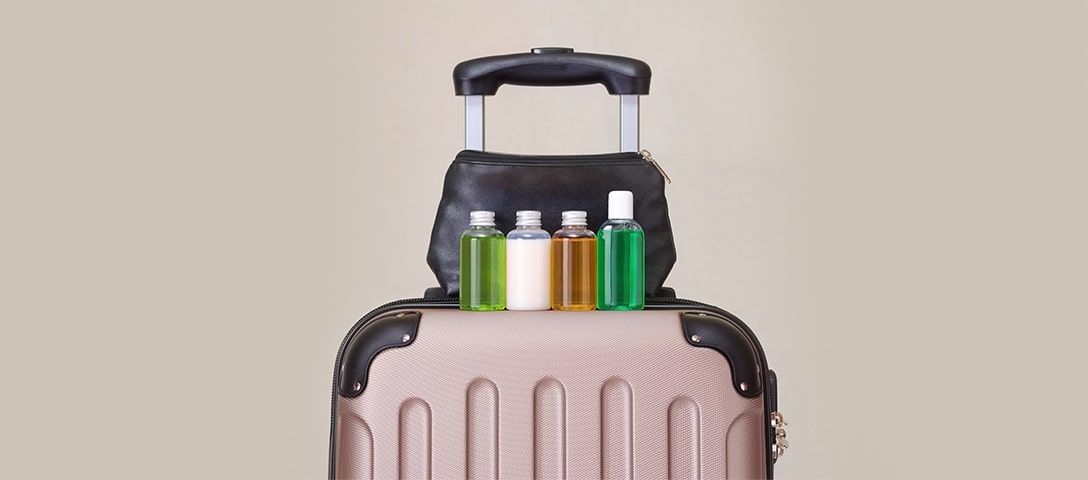Before even starting, take a look at how isopropyl nitrate and hydrazine hydrate looks like. Now compare these liquids to water. If you didn’t see any difference, that’s ok. The difference is that these liquids are highly explosive and toxic. Now imagine being on board of a plane with a whole bottle of that substance. It is not making you feel confident, right? So, this is the reason why specific volumes and types of liquids are prohibited from cabin baggage.
Most of the liquids, gels, sprays, and others can be kept in your cabin case, but there are specific guidelines to follow. Ahead of starting listing the rules regarding liquids you should follow on board, let’s explain why these restrictions were established.
The Implementation of Airline Liquid Restrictions
The rules related to liquids have been forced to be changed almost overnight. The incident that happened almost 13 years ago is the reason why the security check process was revised. We are talking about a terrorist plot to detonate a “liquid bomb” on the aircraft that was flying from Heathrow to North America and to kill more people than 9/11. The terrorists’ plan was uncovered before it happened, but it had a big impact on the security system.
Shortly after the incident, the British airline executives were told to inform their passengers that they would have to carry nothing else than a wallet or a small bag when they board a plane. Even pens were prohibited from cabin luggage, as their ink could be mistaken as an explosive or toxic substance. The only exception was made for the baby food and breast milk, on the condition the passenger should taste it to demonstrate it’s legit.
How Liquid Restrictions on Flights Have Rolled On
As you can guess, the freshly-new regulation that was set up didn’t work properly. The long and strict security check process impeded the boarding process. Lots of flights were canceled, and many passengers and airport staff were frustrated, which drove to the development of the regulation.
Later, airlines widened the range of items permitted on board, but they have set new severe restraints on liquids, aerosols, and gels.
Later on, The European Commission affirmed that this ban would be temporary, and it would be removed once a more efficient screening process would be discovered. Till this day, our jelly and mascarpone end up in security checkpoints' bins.
Once we made sure that there still are restrictions on LAGs (the abbreviation for "liquids, aerosols, and gels"), we need to follow those accordingly. We are here to help you find out, or remind, the rules you should comply with.
TSA Liquid Restrictions Today
To this day, the TSA (Transportation Security Administration) settles how much liquid you can take on a plane, in your hand luggage. The so-called “3:1:1” regulation spreads on gels, aerosols, and liquids on plane. The amount of liquid included in a container must be less than 3.4 oz (or 100 ml). All the containers must be kept in a one-quart size bag made of plastic. Also, the plastic bag has to be clear to ease the checking process. Only one bag of contents is permitted to be taken by one person.
Now that we have uncovered the truth behind why there are liquid restrictions on planes, you know which are those and how they are applied. In order to have a safe and smooth flight, adhere to these rules. We wish you have a good flight!
Last Updated on September 5, 2019.

